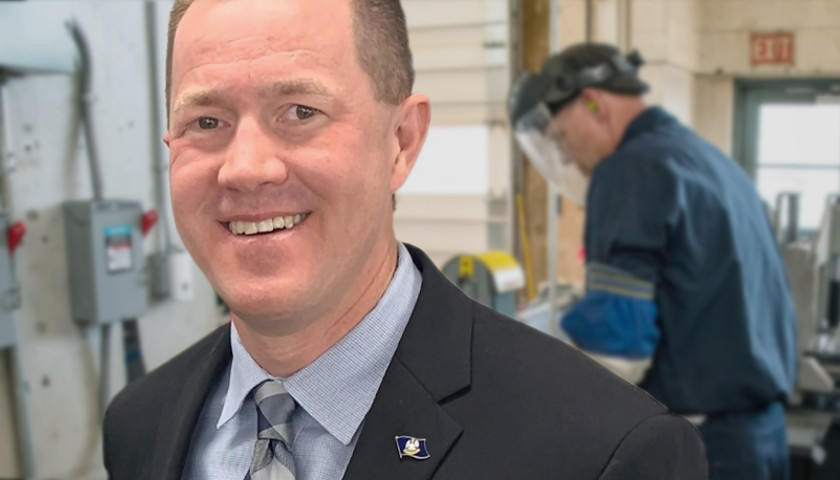by Frederick M. Hess and Hayley Sanon
America’s high schools have problems. Nearly twenty years ago, Bill Gates observed that the existing model is obsolete — that, even when high schools “work,” the results are too often mediocre. In 2016, The Education Trust found that 47 percent of high schoolers graduated prepared for neither college nor a career. In 2018, Gallup reported that two-thirds of high schoolers described themselves as wholly or partially disengaged. And, just last month, the National Center for Education Statistics concluded that high schools are plagued by grade inflation: Over the past decade, grades have risen to a record high even as math and science performance by 12th graders has edged down.
In Louisiana, things are no better. Louisiana’s 84 percent high school graduation rate lags the national average. US News and World report ranks Louisiana’s high schools 42nd in the nation. That’s why Louisiana State Superintendent Cade Brumley has set out to reimagine how students graduate from high school. As he puts it, “Our high schools are antiquated in too many ways and operate in many places the same way they operated 50 years ago.” In response, the Louisiana Department of Education and Board of Regents last fall launched the state’s Fast Forward initiative.
In each of its eight Regional Labor Market Areas, the state provided a $50,000 grant to convene leaders from 4-year colleges and universities, community colleges, apprenticeship programs, school districts, and business to develop economically relevant graduation pathways for high school students. In each region, the goal was to identify apprenticeships and associate’s degree programs which students could complete on a “dual enrollment” basis while in 11th and 12th grade, and create a broad array of direct pipelines into the labor force.
The trick was to develop class sequences that mapped sufficiently onto Louisiana’s high school curriculum requirements to ensure that students would earn both workforce certifications and their high school diploma.
For instance, in Region 1, Nunez Community College already offered an associate’s degree in aerospace manufacturing technology. About half of program’s graduates went on to 4-year universities, while the other half were being hired by the likes of Boeing (an industry partner for the degree program) with starting salaries north of $50,000. Fast Forward created a new high school pathway that allows 11th and 12th graders to enroll in the program and attend classes on the community college campus. These students will graduate with both their diploma and an associate’s degree in aerospace manufacturing technology — meaning that 18-year-old graduates will be in line for $50,000-a-year high-demand jobs without a penny of college debt.
In June 2021, the Louisiana State Board of Elementary and Secondary Education adopted 39 of these pathway frameworks for statewide use. Districts across the state are now empowered to adopt whichever of these pathways make sense given their regional resources and student demands. They can also seek approval to create additional pathways. To help scale Fast Forward statewide, the Department of Education is offering assistance and staff support to districts. Of course, it’s ultimately up to superintendents and local school boards to run with these opportunities. If they don’t, students, parents, and employers will need to speak up.
Brumley says he has been meeting with district superintendents directly to explain the program and make clear that the point is to “bust barriers” so students have more options — especially those who don’t want to attend college but do seek a debt-free path to a rewarding career. And the apprenticeship programs offered through Fast Forward do just that. They are not “internships.” They are apprenticeships that have been registered with the Louisiana Workforce Commission, are recognized by the US Department of Labor, and prepare 18-year-old graduates for remunerative, in-demand jobs.
As it exists, the effort requires no additional funding. The Department of Education is, however, working to “weight” these programs in the state’s student funding formula, so that schools would receive approximately $500 more for each student enrolled in a pathway. This would obviously incentivize schools to offer these options and is intended to help districts cover additional expenses (like transportation or materials) that might arise as the program expands.
The Department of Education is also working with the state board to ensure that Louisiana’s accountability system gives schools appropriate credit for preparing students for work via the new pathways, alongside existing measures like test scores and graduation rates.
While issues of accountability and funding remain in flux, the effort shows a promising way to tackle the longstanding problem of high school instruction that can feel irrelevant — especially for disengaged students who may want a path forward that doesn’t necessarily entail a multi-year stint at college.
– – –
Frederick M. Hess is the director of education policy studies at the American Enterprise Institute. Hayley Sanon is a research associate at AEI.Photo.
Photo “Dr. Cade Brumley” by Louisiana Department of Education and “Mechanic’s Garage” is by ORDOT CC2.0.








